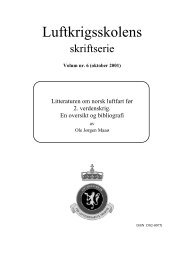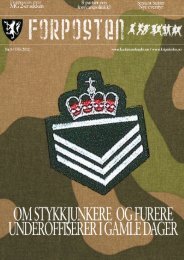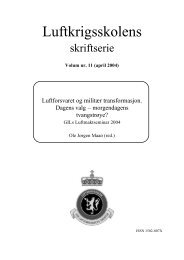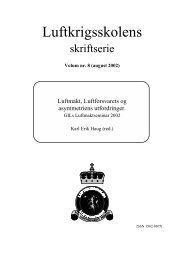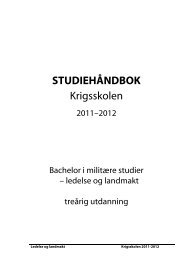Wilhelm Mohr
Wilhelm Mohr
Wilhelm Mohr
You also want an ePaper? Increase the reach of your titles
YUMPU automatically turns print PDFs into web optimized ePapers that Google loves.
PART I – The Contribution of the Norwegian Air Forces<br />
As the struggle for the Atlantic progressed, the USA had increasingly<br />
extended its support with bases for escort groups and aircraft. Eventually<br />
this included Iceland. Thus the Coastal Command there was<br />
relieved and at the end of 1942, it was decided that 330 Squadron should<br />
move to Oban in Scotland. It would now come under 15 Group Command<br />
and be equipped with Sunderlands. This big 4-engined flying<br />
boat fully equipped required a crew of 10. In January 1943 the squadron<br />
departed from Iceland, leaving a contingent of Northrops for a time at<br />
Budareyri to guard the east coast.<br />
After intensive training the first operations from Oban were carried<br />
out on 20 April, thus bringing the squadron back into the Battle of<br />
the Atlantic, which was now at its peak. The squadron still supported<br />
the anti-submarine operations generally. However, the distance to areas<br />
further north was deemed too long and impractical. The stay at Oban<br />
was therefore short and the next base was Sullom Voe in Shetland. By 14<br />
July the whole squadron of 13 aircraft was in place and could start operations,<br />
now under 18 Group Command. It welcomed the opportunity<br />
to operate towards and along the Norwegian coast. The extended range<br />
of the Sunderlands allowed the Murmansk convoys to be escorted far<br />
to the north and east in the Arctic Ocean. Such missions could be both<br />
demanding and tedious, but they formed a critical part of the ships’<br />
protection against submarine attacks.<br />
The weather in Shetland could be as harsh as that experienced in<br />
Iceland. Though better facilities existed in the harbour, «gale-crews»<br />
often had to be kept on board the big flying boats to avoid disaster.<br />
Results and losses<br />
330 Squadron remained at Sullom Voe until the end of the war. With its<br />
Sunderlands it accomplished over 12,000 flying hours, and conducted<br />
655 submarine searches, over 50 convoy escorts and 22 different rescue<br />
tasks. 15 submarines were seen, of which 2 were sunk and 4 damaged.<br />
2 German aircraft were damaged. 4 of the squadron’s aircraft were lost<br />
with a total of 46 persons. These figures are in addition to the Squadron’s<br />
accomplishments in Iceland, described earlier. In total the squadron<br />
lost 16 aircraft with 63 persons.<br />
47





